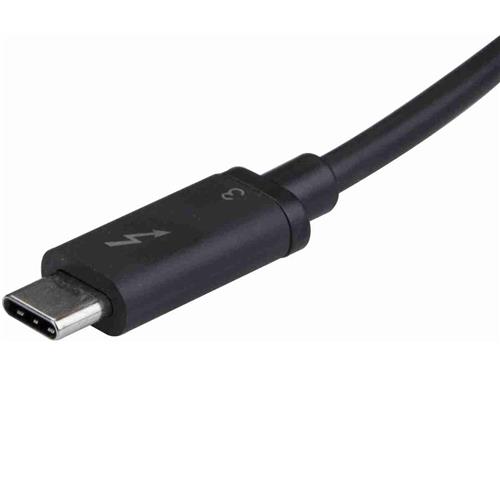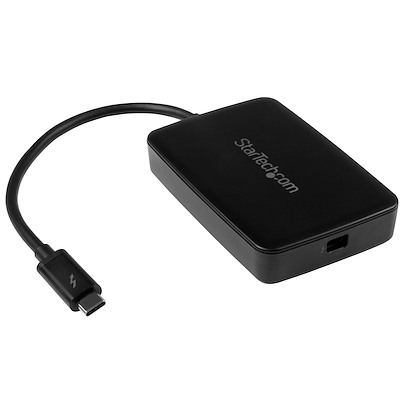
- Startech Thunderbolt 3 To Displayport Driver Installations Are#
- Startech Thunderbolt 3 To Displayport Portable Dual DisplayPort#
Startech Thunderbolt 3 To Displayport Portable Dual DisplayPort
Using a Thunderbolt 3 adapter is the only way to connect a 5K display to computers that don't have multiple DP or Thunderbolt 3 ports, such as your Dell PrecisSeries workstation.StarTech.com 3ft (1m) USB C to DisplayPort 1.2 Cable 4K 60Hz, Bidirectional DP to. Video Adapter Cable, HBR2/HDR, USB Type C/Thunderbolt 3 Monitor Cable.Laptop Docking Station Mac & Windows Bus-Powered 1x USB-A. The bus-powered Thunderbolt 3 docking station connects to dual 4K DisplayPort displays, Gigabit Ethernet and a USB 3.0 (Type-A) port. Compatible with macOS and Windows , it's the ideal accessory for your Thunderbolt 3 laptop and for flexible setup, the attached USB-C cable has an extended length of (7.9 in. Create a Dual-4K 60Hz Workstation Great for editing 4K video or other Ultra HD tasks, this portable dual DisplayPort docking station supports 40Gbps of throughput and 4K resolution at 60Hz on two DisplayPort monitors, through a single Thunderbolt 3 port.
Startech Thunderbolt 3 To Displayport Driver Installations Are
This certified Thunderbolt 3 docking station is a compact mini dock, delivering essential connections for productivity. No time-consuming driver installations are required. The Ports You Need Most To enhance your productivity, the Gigabit Ethernet port (with PXE Boot and Wake-on-LAN support) ensures reliable wired network access. A USB 3.0 Type-A port, with ample space around it, lets you connect a USB device, like a flash drive, for easy file access.
HS1TX(P) of the source is connected to HS1RX(P) of the sink.Thunderbolt is the brand name of a hardware interface for the connection of external peripherals to a computer. The cable is actually a crossover cable, it swaps all receive and transmit lanes e.g. 2Thunderbolt 4: 4× PCI Express 3.0, DisplayPort 2.0, USB4This is the pinout for both sides of the connector, source side and sink side. Supports audio through HDMI converters.StarTech com Thunderbolt 3 to Dual DisplayPort Adapter DP 1 4 Dual 4K 60Hz or Single 8K/5K Thunderbolt 3 to DP Adapter TB3 to 2x DisplayPort Monitor VideoThunderbolt 1: 2 channels, 10 Gbit/s each (20 Gbit/s in total) Thunderbolt 3: 40 Gbit/s bidirectional, 80 Gbit/s one wayThunderbolt 1: 4× PCI Express 2.0, DisplayPort 1.1a Thunderbolt 2: 4× PCI Express 2.0, DisplayPort 1.2Thunderbolt 3: 4× PCI Express 3.0, DisplayPort 1.2 (2 streams), USB 3.1 gen.
A single Mini DisplayPort monitor or other device of any kind may be connected directly or at the very end of the chain. A single Thunderbolt port supports up to six Thunderbolt devices via hubs or daisy chains as many of these as the host has DP sources may be Thunderbolt monitors. Thunderbolt 1 and 2 use the same connector as Mini DisplayPort (MDP), whereas Thunderbolt 3 and 4 reuse the USB-C connector from USB.Thunderbolt 2 port on MacBook Pro with Retina display.Thunderbolt controllers multiplex one or more individual data lanes from connected PCIe and DisplayPort devices for transmission via two duplex Thunderbolt lanes, then de-multiplex them for use by PCIe and DisplayPort devices on the other end. Up to six peripherals may be supported by one connector through various topologies. Thunderbolt combines PCI Express (PCIe) and DisplayPort (DP) into two serial signals, and additionally provides DC power, all in one cable. It was initially marketed under the name Light Peak, and first sold as part of an end-user product on 24 February 2011.
It was initially marketed under the name Light Peak, and after 2011 as Silicon Photonics Link. The interface was originally intended to run exclusively on an optical physical layer using components and flexible optical fiber cabling developed by Intel partners and at Intel's Silicon Photonics lab. Thunderbolt can be implemented on PCIe graphics cards, which have access to DisplayPort data and PCIe connectivity, or on the motherboard of new computers with onboard video, such as the MacBook Air. When connected to a Thunderbolt device, the per-lane data rate becomes 10 Gbit/s and the four Thunderbolt lanes are configured as two duplex lanes, each 10 Gbit/s comprising one lane of input and one lane of output. When connected to a DP-compatible device, the Thunderbolt port can provide a native DisplayPort signal with four lanes of output data at no more than 5.4 Gbit/s per Thunderbolt lane.

In September 2010, some early commercial prototypes from manufacturers were demonstrated at Intel Developer Forum 2010. At the same demonstration, Intel officials said they expected hardware manufacturing to begin around the end of 2010. On , in Brussels, Intel demonstrated a laptop with a Light Peak connector, indicating that the technology had shrunk enough to fit inside such a device, and had the laptop send two simultaneous HD video streams down the connection, indicating that at least some fraction of the software/firmware stacks and protocols were functional. At the show, Intel said Light Peak-equipped systems would begin to appear in 2010, and posted a YouTube video showing Light Peak-connected HD cameras, laptops, docking stations, and HD monitors.

The conversion of electrical signal to optical is embedded into the cable itself, so the current MDP connector is forward compatible. The version from Corning contains four 80/125 μm VSDN (Very Short Distance Network) fibers to transport an infrared signal up to 190 m (600 ft). The optical fiber cables would run "tens of meters" but would not supply power, at least not initially. See comparison section below.Intel and industry partners are still developing optical Thunderbolt hardware and cables. The final Thunderbolt standard specifies 10 W DC on every port.
Released the first range of optical Thunderbolt cables available in the Western marketplace outside Japan, along with optical USB 3.0 cables, both under the brand name "Optical Cables". In September 2013, glass company Corning Inc. However, those cables are retailed almost exclusively in Japan, and the price is 20 to 30 times higher than copper Thunderbolt cables.German company DeLock also released optical Thunderbolt cables in lengths of 10 m (30 ft), 20 m (70 ft), and 30 m (100 ft) in 2013, priced similarly to the Sumitomo ones, and retailed only in Germany. It is available in lengths of 10 m (30 ft), 20 m (70 ft), and 30 m (100 ft). The first such optical Thunderbolt cable was introduced by Sumitomo Electric Industries in January 2013.
However, optical Thunderbolt 1 and 2 cables could be used at the time with Apple's Thunderbolt 3 (USB-C) to Thunderbolt 2 adapters on each end of the cable. This lets peripheral Thunderbolt devices be farther from their host device(s).As of March 2020 there were no optical Thunderbolt 3 cables on the market. The cables extend the current 30 m (100 ft) maximum length offered by copper to a new maximum of 60 m (200 ft).


 0 kommentar(er)
0 kommentar(er)
